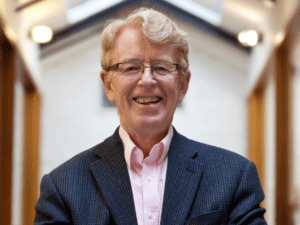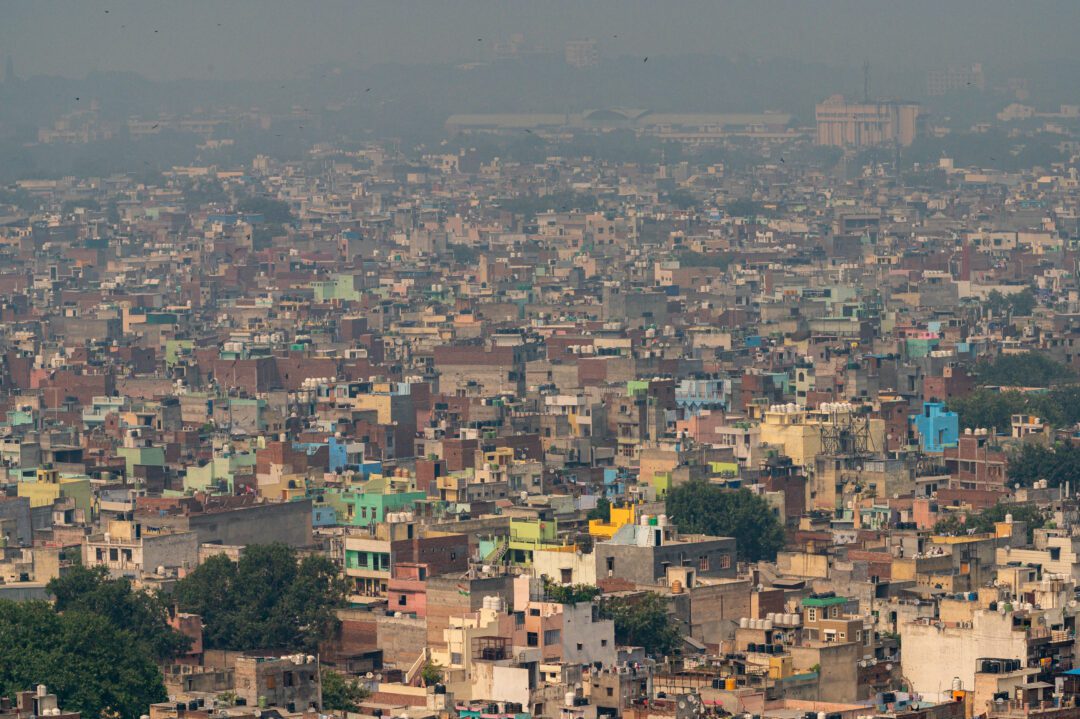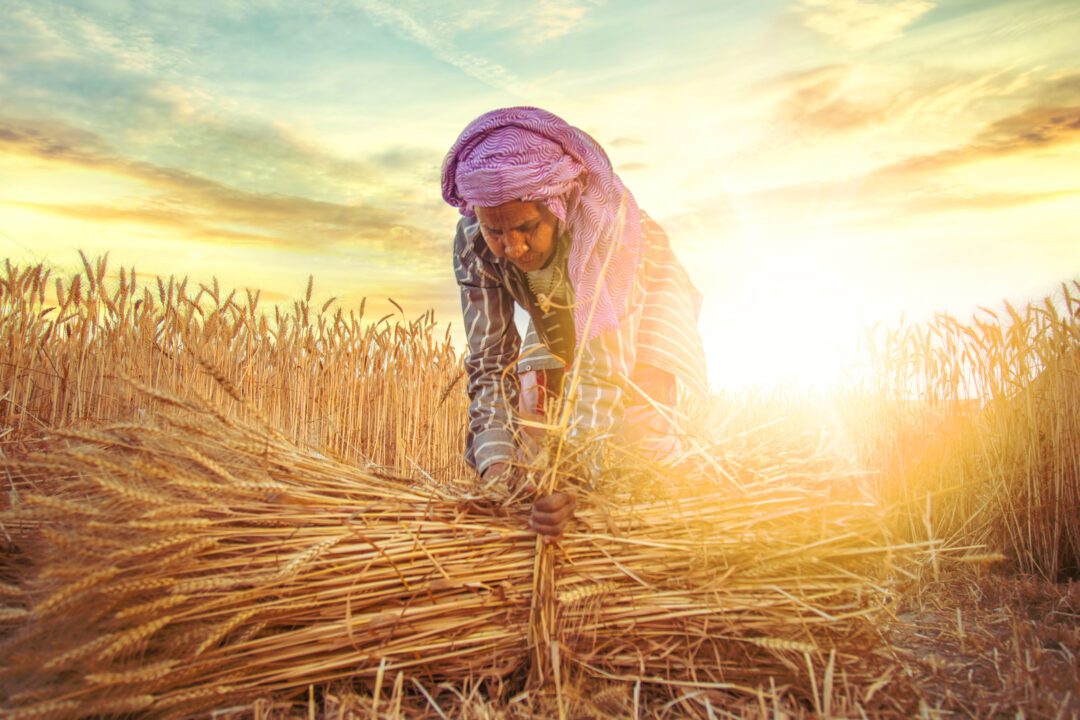How can India turn waste and clean energy into fuel to fight air pollution? The answer may lie in biomass, says Michael B. McElroy, the Gilbert Butler Professor of Environmental Studies in the Department of Earth and Planetary Sciences and the Harvard Paulson School of Engineering and Applied Sciences. Prof. McElroy is one of the inaugural recipients of a Mittal Institute Faculty Climate Grant for his project, “Optimizing India’s Biofuel Capacity with Green Hydrogen Penetration: A Decarbonization and Emission Reduction Strategy.” He argues that using agricultural and organic waste to produce biofuels offers a powerful solution to reduce air pollution, improve public health, and advance sustainable development.
We spoke with Prof. McElroy about his climate grant ahead of his upcoming talk during Harvard Climate Action Week on September 18, where he will discuss his new book, Sun, Wind, and Biomass: India’s Path to a Sustainable Future.

Michael B. McElroy
Mittal Institute: Prof. McElroy, your grant project explores India’s multifaceted air pollution crisis, caused by burning fossil fuels and seasonal agricultural waste. How has India’s air pollution crisis evolved over the last decade, and which regions are most affected?
Michael B. McElroy: Over the past decade, India’s air pollution crisis has only gotten more severe. In fact, recent research from Harvard’s T.H. Chan School of Public Health shows that every single one of India’s roughly 1.4 billion people is exposed to levels of particulate matter (PM2.5) that exceed the World Health Organization’s guidelines, and not just occasionally – day after day, year after year. India’s PM2.5 levels average more than ten times the WHO safe limit, and 13 of the 20 most polluted cities in the world are in India.
New Delhi is one of the most polluted capital cities on the planet, but the reality is that this is a nationwide issue. Long-term exposure to these pollutants is shaving years off people’s lives. Studies estimate that this kind of air pollution is linked to around 1.5 million premature deaths every year in India.
The good news is that there has been progress. The Indian government has tightened vehicle and industrial emission standards, and since 2019 the National Clean Air Programme has been pushing for city-specific plans to cut PM2.5 levels by 2026. India is starting to see areas of improvement, with some cities reporting “good air days,” but there’s still a long way to go.

Aerial View of Old Delhi on a smoggy afternoon | By Navin, Adobe Images
Mittal Institute: How can biomass be used to produce biofuels, and what are the benefits of this approach?
Michael B. McElroy: I’m exploring how India can harness its abundant biomass resources to produce biofuels. The goal is to reduce fossil fuel use and, in turn, cut the particulate emissions that are driving this public health crisis. Every year, India’s farms generate vast amounts of “leftovers” like rice husks, wheat straw, sugarcane bagasse. Known as biomass, these materials are often cleared by burning in the open fields. This burning sends plumes of smoke into the area and adds to the smog that chokes India’s cities.
But biomass doesn’t need to be a waste. Using technologies like fermentation, gasification, and anaerobic digestion, biomass can be transformed into clean fuels like ethanol, biodiesel, etc. These fuels run vehicles, fuel cooking, and power electricity.
Biomass doesn’t need to be a waste. Using technologies like fermentation, gasification, and anaerobic digestion, biomass can be transformed into clean fuels like ethanol, biodiesel, etc. These fuels run vehicles, fuel cooking, and power electricity.
The benefits are tangible: less stubble burning, cleaner air, and new income streams for farmers. Biomass-to-biofuel is more than just an energy solution – it is a pathway to stronger rural economies, healthier communities, and a more sustainable future for India.
Mittal Institute: In your Mittal Institute faculty climate grant proposal, you aim to explore the potential of integrating “green” hydrogen (i.e., produced by water electrolysis using renewable power) into the biomass-to-biofuel process – something that has not yet been sufficiently investigated. What makes green hydrogen a promising addition to the biomass-to-biofuel process?
Michael B. McElroy: Green hydrogen brings something unique to the table – it can supercharge the biomass-to-biofuel process. Biomass is rich in carbon but often limited in hydrogen content, which means some of its carbon gets wasted as CO₂ during conversion. By adding green hydrogen, we can pair that hydrogen with biomass carbon to produce more fuel from the same amount of raw material.
This integration boosts overall fuel yields; locks in more carbon into useful fuels instead of letting it escape as emissions; and creates a bridge between renewable power and sustainable fuels, which helps India decarbonize hard-to-abate sectors like heavy transport and industry.
Mittal Institute: By turning waste into valuable energy resources, biomass-to-biofuel projects may contribute to rural development. Can you elaborate on the ways can biofuel production help alleviate rural poverty and promote economic development?
Michael B. McElroy: Biofuel production can create new income streams for farmers, who can sell their agricultural residues instead of burning them. This not only puts money directly in their pockets but also reduces air pollution from stubble burning.
It can also generate jobs in biomass-to-biofuels storage, transport, and processing. These opportunities would keep employment within rural communities. Biofuel projects can yield investments in rural infrastructure like storage facilities and processing plants. And lastly, rural communities can reduce their dependence on expensive fossil fuels, keeping more money circulating in the local economy.
Biomass-to-biofuel is not only about cleaner energy, but also about building stronger communities and creating pathways out of poverty.
Biomass-to-biofuel is not only about cleaner energy, but also about building stronger communities and creating pathways out of poverty.
Mittal Institute: What are the biggest challenges to implementing biomass-to-biofuel systems at scale in India?
Michael B. McElroy: The biggest challenge in collecting and transporting biomass is the fact that it’s bulky, seasonal, and scattered across farms. India would need more large-scale processing plants, which require big investments, and policies so farmers and investors feel secure. And rural communities must be equipped with the awareness and skills to participate. Without these things, scaling biofuels could be challenging.

A farmer collects bundles of wheat stalk in Haryana, India | Adobe
Mittal Institute: Congratulations on your new book, Sun, Wind, and Biomass: India’s Path to a Sustainable Future, with Prem Shankar Jha, journalist and author. You will share more about the book in your talk on September 18 co-sponsored by the Mittal Institute and the Harvard-China Project on Energy, Economy and Environment based in the Harvard Paulson School of Engineering and Applied Sciences. What led you and Prem to author it together?
Michael B. McElroy: I have known Prem for about six years, and during that time he has guest-lectured in my classes and we’ve explored a variety of issues of clean energy transition and climate inequity in developing countries. He has also been a visiting fellow with the Harvard-China Project multiple times, traveling from his hometown of Mumbai to spend extended periods in our Pierce Hall offices. There, he’s worked closely with our interdisciplinary team on a wide range of topics.
So, when the opportunity arose to co-author our current book, I knew it was a chance to combine our strengths in a way that could truly illuminate India’s path forward. Joining Prem’s journalistic expertise and deep interest in clean energy topics with my climate, atmospheric, and energy science background allowed us to combine sharp storytelling with solid science, to make this project truly distinctive.
Mittal Institute: What are some of the biggest takeaways from the book?
Michael B. McElroy: Our book makes the case that India’s shift from fossil fuels to clean energy isn’t just vital for the climate – it is also a powerful opportunity to grow the economy, clean the air, and create new futures for rural populations. We envision a fossil-free future for India and outline how it is obtainable. We also argue this transition is a vital catalyst for growth, placing India’s energy shift within the broader urgency of the global climate crisis, lessons that can also be applied in other middle- and low-income countries with large agricultural sectors and renewable energy resources.
Faculty, apply for funding for our second round of climate research grants! Applications are due Oct 8.
☆ The views represented herein are those of the interview subjects and do not necessarily reflect the views of the Mittal Institute, its staff, or its Steering Committee.
